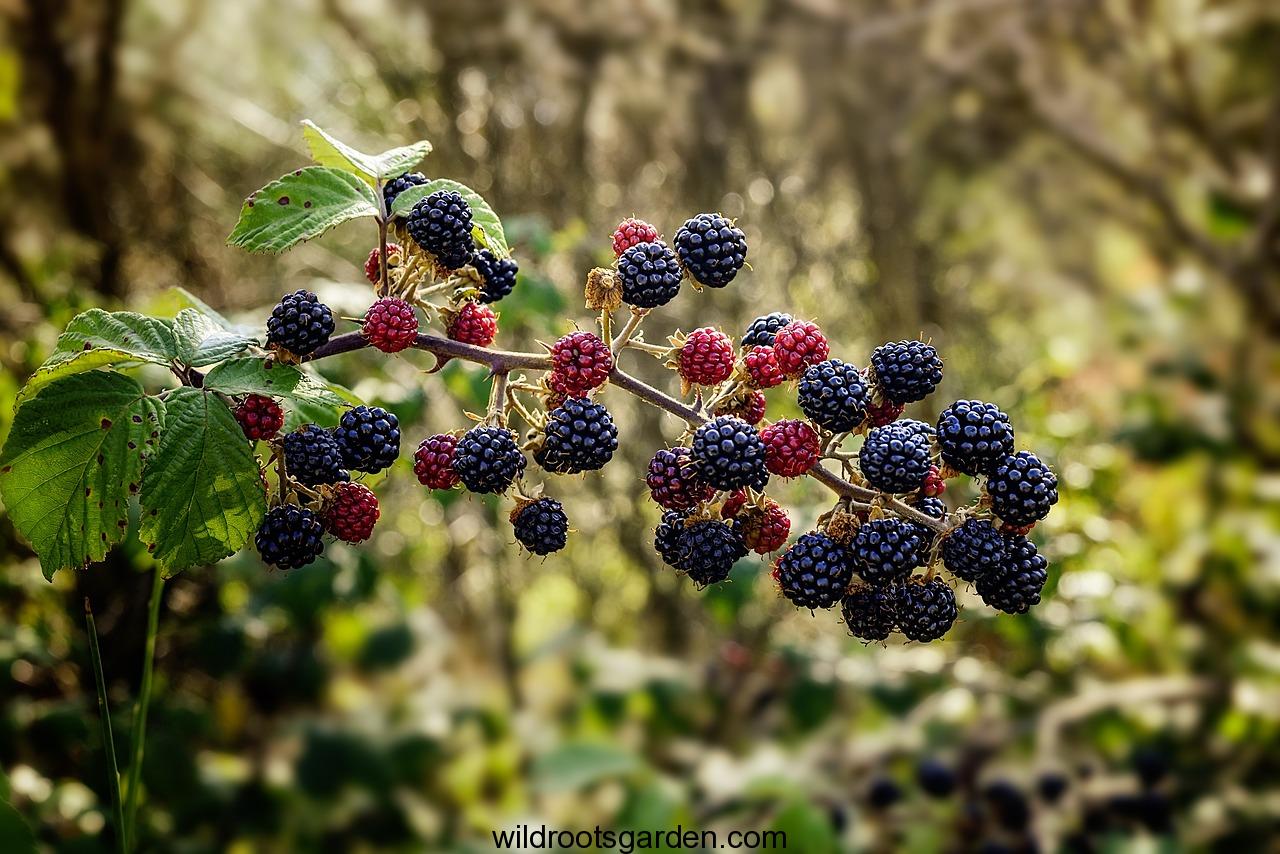A bramble tree is a type of plant that has long, thorny, and arching stems, growing up to two meters or more in height. The leaves of a bramble tree are alternate and palmately compound, with each leaf divided into three or five serrated oval leaflets.
The top of the leaves is dark green, while the underside is pale. Brambles, also known as blackberries, are part of the Rubus fruticosus genus. They are often called brambles in the United Kingdom and can be found growing wild in woodlands and forests.
These shrubby plants have stems covered in sharp prickles and are known for their delicious fruit.
A bramble tree, also known as Rubus fruticosus, features long, thorny, and arching stems that can grow to be two meters or more in height. The leaves are palmately compound and divided into three or five serrated, oval leaflets. Bramble trees are native to the United Kingdom and are commonly referred to as blackberries.
Table of Contents
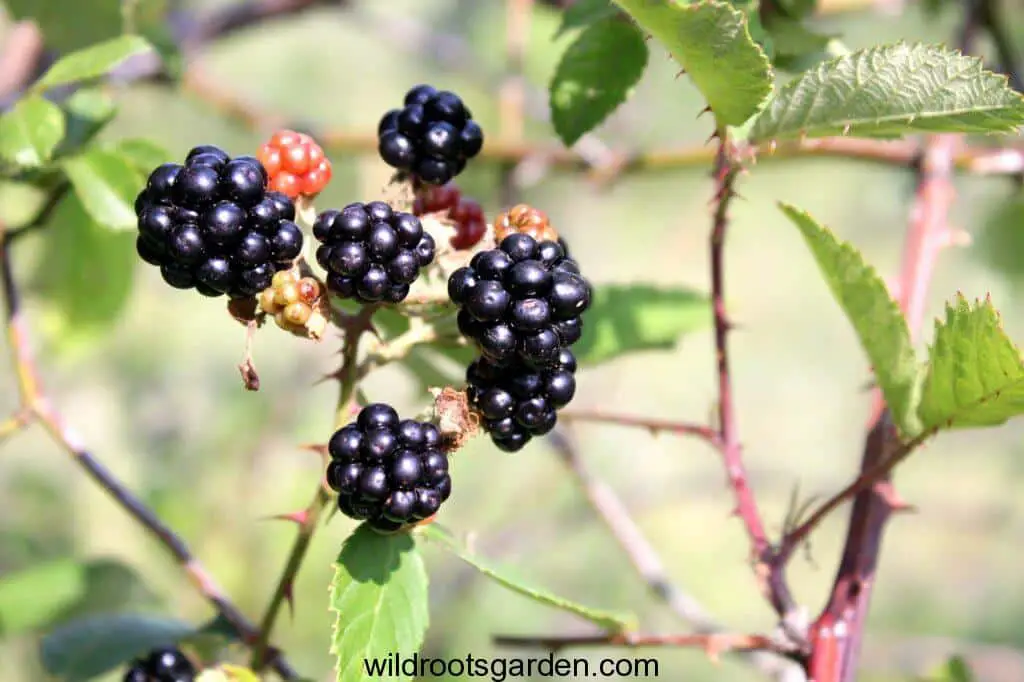
What Is A Bramble Tree?
A Bramble tree, scientifically known as Rubus fruticosus, is a fascinating plant which is often found in woodlands and forests. It is characterized by its long, thorny, and arching stems that can grow up to two meters or more in height. The leaves of a Bramble tree are alternate and palmately compound, meaning they are divided into three or five serrated, short-stalked, oval leaflets. These leaves are dark green on top and pale underneath, while the leaf stalks and mid-ribs are prickly.
Different Names For Bramble Trees
Derived from the Middle English word “brembel,” the term “bramble” is used interchangeably with “blackberry” in the United Kingdom. In fact, “bramble jelly” is referred to as “blackberry jam” in America. Both terms are used to define a prickly and thorny shrub. These names reflect the strong relationship between the United States and the United Kingdom when it comes to this plant. So, whether you call it a bramble or a blackberry, you’re referring to the same delicious fruit.
Characteristics Of Bramble Trees
Bramble bushes typically grow as shrubs, although a few varieties can be herbaceous. The stems of the Bramble tree are covered in sharp prickles, making them appear thorny and foreboding. These plants have the ability to grow long, arching stems that enable them to reach out and explore the surrounding areas. Bramble trees are widely recognized for their ability to produce delicious, sweet, and juicy fruits, which are consumed by various animals and enjoyed by humans for their taste and nutritional benefits.
In addition to their delightful fruits, Bramble trees also contribute to the beauty of their surroundings. With their unique characteristics and adaptability, they make for a stunning sight in autumn, when the leaves change to vibrant shades of red, orange, and yellow. These trees add a touch of enchantment and charm to gardens and woodlands alike.
To sum it up, Bramble trees are remarkable plants with their long, thorny stems, compound leaves, and delicious fruits. They are known by different names in different regions but share a strong genetic connection. These trees not only provide a bountiful harvest but also grace us with their captivating presence in nature. Whether you’re a fan of their fruit or appreciate their aesthetic appeal, Bramble trees have a unique place in our ecosystem.
Identification And Meaning Of Bramble Trees
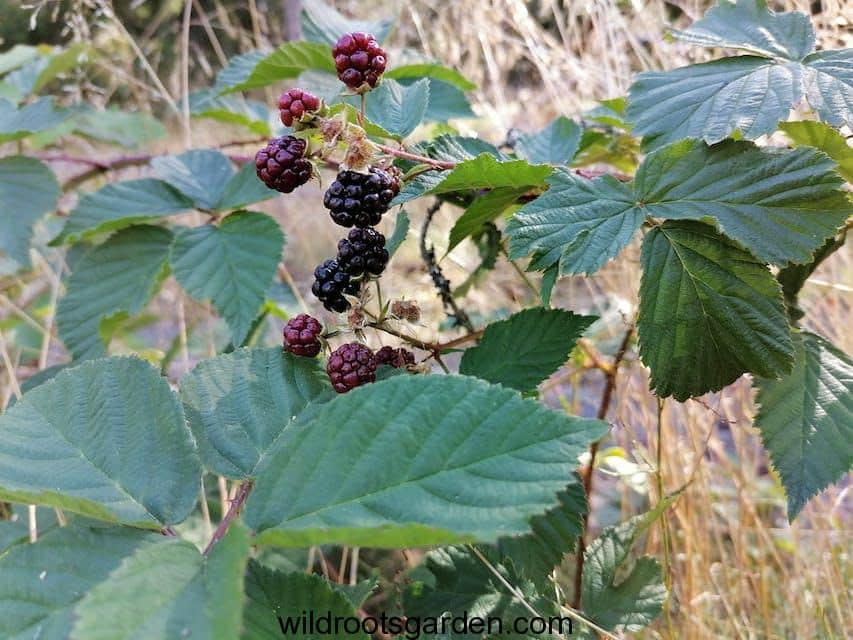
Bramble trees, also known as Rubus fruticosus, are characterized by their long, thorny, and arching stems, which can grow up to two meters or more in height. These trees have alternate and palmately compound leaves, typically consisting of three or five serrated, oval leaflets. The leaves are dark green on the top and pale beneath, while the leaf stalks and mid-ribs are prickly, providing protection against potential threats.
Physical Characteristics Of Bramble Trees
When it comes to physical characteristics, bramble possess certain distinguishing features:
- Long, thorny, and arching stems
- Alternate and palmately compound leaves
- Leaflets that are serrated, oval-shaped, and short-stalked
- Dark green color on the top surface of leaves
- Pale color on the lower surface of leaves
- Prickly leaf stalks and mid-ribs
Naming And Terminology Of Bramble Trees
The term “bramble” is derived from the Middle English word “brembel.” In the United Kingdom, it is often used interchangeably with “blackberry,” referring to a prickly and/or thorny shrub. For instance, “bramble jelly” is equivalent to “blackberry jam” in the United States. Brambles are members of the rose family, specifically the genus Rubus, which includes raspberries and blackberries. While some people use the term “bramble” to refer to any thorny bush, its accurate definition is limited to these specific plants.
Symbolism And Cultural Significance Of Bramble Trees
Bramble hold great symbolism and cultural significance in various contexts. Here are a few notable aspects:
- In literature and mythology, bramble are often associated with the idea of overcoming obstacles. They symbolize resilience and strength in the face of adversity.
- In some cultural traditions, bramble trees are believed to possess protective qualities. They are often planted as natural fences or barriers to ward off potential threats.
- Due to their thorny nature, bramble also represent the concept of defense and protection. Their sharp thorns act as a deterrent against trespassers or predators.
- In gardening and landscaping, bramble trees are appreciated for their ability to provide habitat and food for wildlife, as well as their aesthetic appeal with their vibrant berries and foliage.
Overall, bramble have a rich history and diverse symbolism, making them a captivating subject of study and admiration.
Practical Uses And Benefits Of Bramble Trees
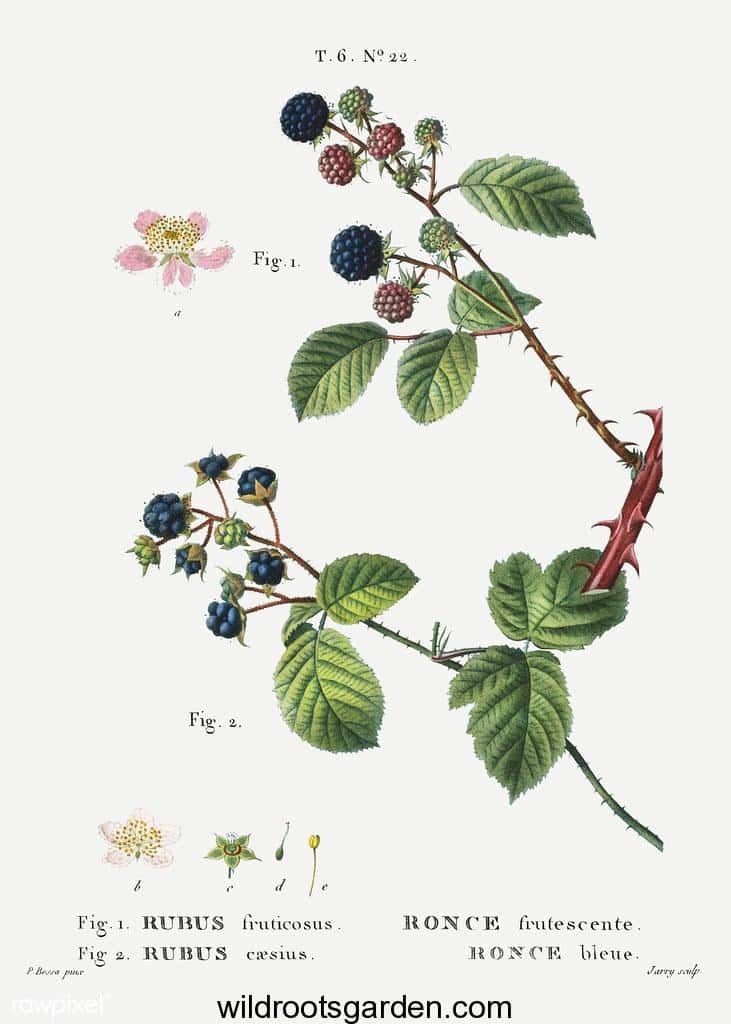
Bramble, also known as blackberry and raspberry bushes, offer a plethora of practical uses and health benefits. These thorny shrubs not only provide delectable fruits used in culinary creations but also possess medicinal properties and play a vital role in supporting wildlife and ecological balance.
Culinary Uses Of Bramble Tree Fruit
The sweet and tangy fruits of Bramble are renowned for their versatility in the culinary world. From desserts to jams, these succulent berries add a burst of flavor to various dishes and beverages. Some popular culinary uses of Bramble tree fruits include:
- Mouthwatering pies and tarts
- Delicious homemade jams and jellies
- Refreshing smoothies and juices
- Flavorful sauces for savory dishes
- Rich and vibrant fruit compotes
Medicinal And Health Benefits Of Bramble Trees
Beyond their delightful taste, Bramble offer numerous medicinal and health benefits. The fruits, leaves, and stems of these shrubs contain valuable nutrients, antioxidants, and phytochemicals that contribute to overall well-being. Some key health benefits of Bramble include:
- Boosting Immune System: The high vitamin C content in Bramble tree fruits strengthens the immune system, helping the body fight off infections and diseases.
- Improving Digestion: Bramble fruits are rich in dietary fiber, which aids in digestion, prevents constipation, and promotes a healthy gut.
- Antioxidant Power: The antioxidants present in Bramble tree fruits help protect cells from oxidative stress, reducing the risk of chronic diseases.
- Heart Health: Bramble fruits contain heart-healthy nutrients, such as anthocyanins and flavonoids, which support cardiovascular health.
- Anti-Inflammatory Properties: Some compounds found in Bramble tree extracts have anti-inflammatory effects, offering relief from inflammation-related ailments.
Ecological Importance And Wildlife Support
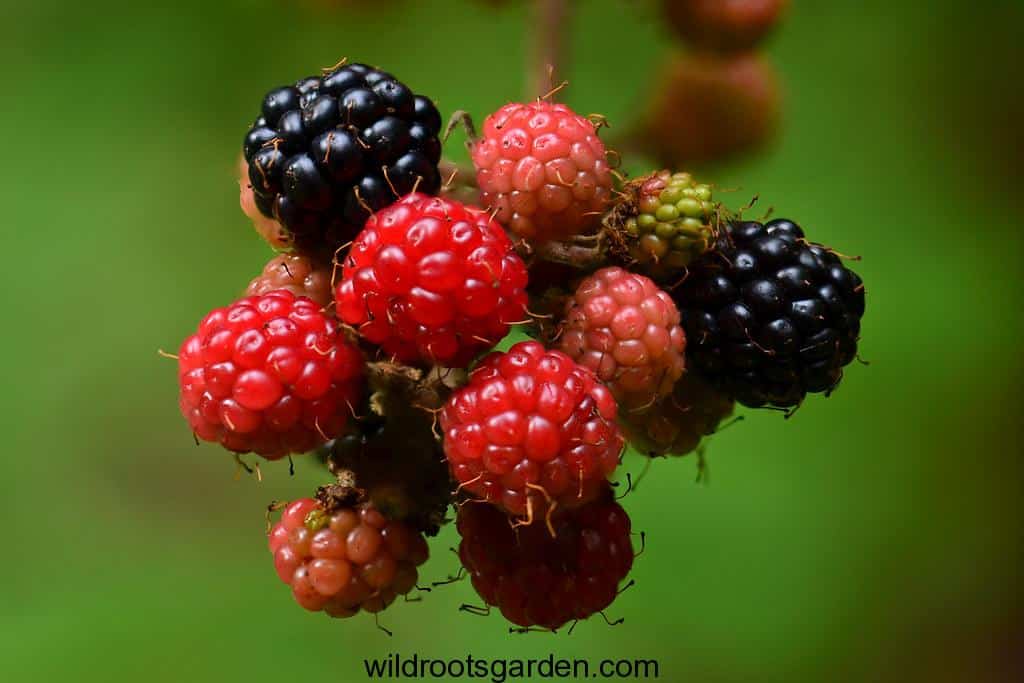
Bramble play a crucial role in maintaining ecological balance and providing habitat and food sources for various wildlife species. These thorny bushes offer:
- A safe haven for birds, nesting and foraging opportunities
- Nectar and pollen for bees and other beneficial insects
- Shelter for small mammals
- Food for butterflies and other pollinators
The dense thickets formed by Bramble also help prevent soil erosion and provide cover for smaller plants, contributing to a healthy ecosystem.
With their culinary versatility, health benefits, and ecological importance, Bramble prove to be valuable assets in both human and natural domains.
Frequently Asked Questions On Bramble Tree
What Is A Bramble Tree?
A bramble tree is a thorny shrub with long, arching stems that can grow up to two meters or more in height. Its leaves are divided into three or five serrated, oval leaflets. Bramble is often used interchangeably with “blackberry” in the UK.
What Do Americans Call Brambles?
Americans call brambles “blackberries. ” Bramble refers to a prickly and thorny shrub, commonly known as blackberry in the United States. The term “bramble jelly” is often used interchangeably with “blackberry jam. ” Both terms are used to describe the same fruit.
Are Brambles The Same As Thorns?
Brambles are not the same as thorns. Brambles refer to members of the rose family, such as raspberries and blackberries, which have thorny stems. Thorns, on the other hand, are sharp pointed structures found on a variety of plants.
Is A Bramble A Blackberry?
Yes, a bramble is a blackberry. Blackberry is the fruit and bramble is the bush. Bramble is wild (Rubus vulgaris) and blackberry (Rubus fruiticosus) is cultivated. Bramble is the northern name and blackberry the southern.
Conclusion
From its long, thorny stems to its dark green, oval leaflets, the bramble tree is a unique and fascinating plant. With its ability to grow up to two meters high and its prickly characteristics, it stands as a testament to the beauty and resilience of nature.
Whether you call it a blackberry or a bramble, this plant has captured the attention of both humans and wildlife alike. Its delicious fruit and its importance to the ecosystem make it a valuable addition to any garden or natural landscape.
Embrace the wonder of the bramble and witness its beauty firsthand.

